Adventurous Kate contains affiliate links. If you make a purchase through these links, I will earn a commission at no extra cost to you. Thanks!
Buenos Aires is a city that will enchant you from the moment you arrive. This sprawling South American capital is vibrant and grandiose — it could almost be Paris, I thought. Or Madrid. Or Mexico City.
But just wait until you see all the cool things to do in Buenos Aires. Incredible culture, fantastic food, and outstanding value for money — you’re going to have a blast!
Planning your trip to Buenos Aires last minute?
Buenos Aires tends to book up quickly. Book ahead to avoid disappointment!
💃🏻 Top Experiences and Tours in Buenos Aires:
- Buenos Aires Hop-on, Hop-off Bus Tour (Most popular tour in town)
- La Ventana Tango Show (Top-rated tango experience)
- Day trip to Colonia del Sacramento, Uruguay (I LOVED this day trip!)
🛌 Top-Rated Hotels in Buenos Aires:
- BE Jardin Escondido By Coppola (Upscale + great neighborhood)
- Magnolia Hotel Boutique (Chic + comfortable)
- Palermo Bridge (Great budget option)
🚗 Renting a car from Buenos Aires Airport? Find deals on car rental rates here.
You come to Buenos Aires for the art and culture, the world-class art museums, the incredible live music, and of course, the tango performances. It’s also a city for foodies — steak reigns supreme, of course, but also empanadas, alfajores, and a vibrant international food scene
And Buenos Aires is a city that’s just plain fun, with tons of quirky and cool bars, late-night dance clubs, and electrifying live events. And surprisingly reasonable prices abound, making Buenos Aires one of the best-value big cities in the world.
I visited Buenos Aires on my first solo trip ever at the age of 24, and recently returned more than 15 years later for an extended visit. Has the city changed? Has it ever. And I’ve changed, too.
I’m excited to share with you the best things to do in Buenos Aires. Let’s take a look!
This post was published in March 2024 and was co-written by Adventurous Kate and Dale Peterson.
Table of Contents
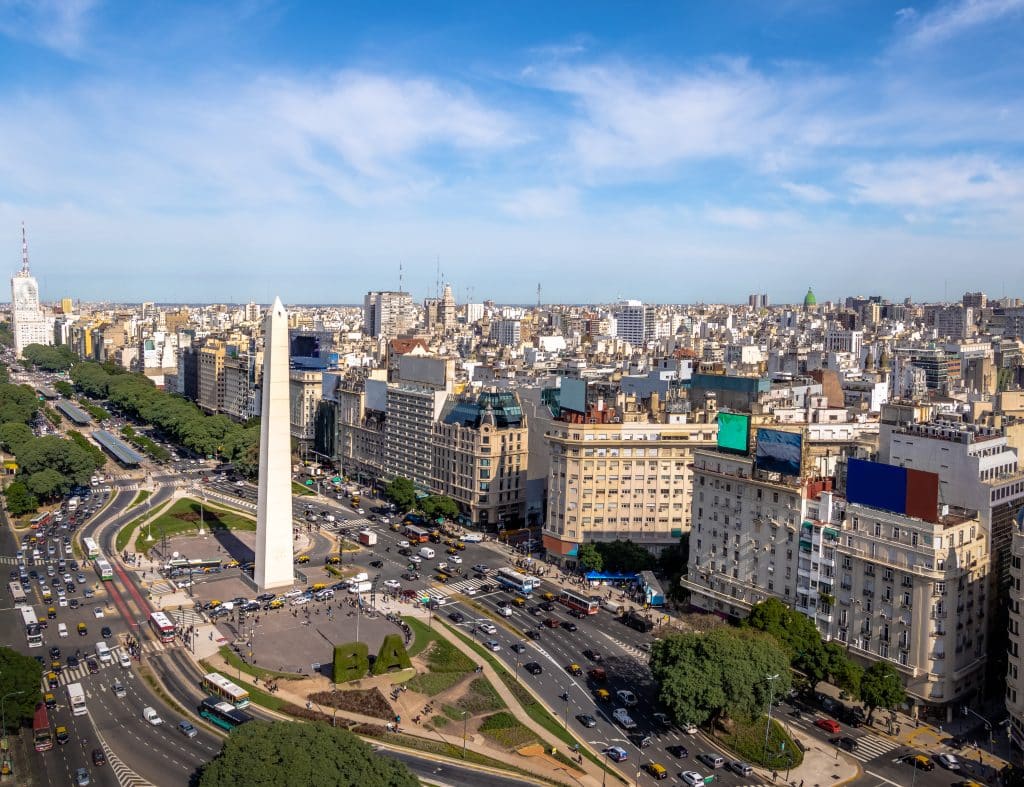
Things to Do in Buenos Aires
Explore the Different Neighborhoods of Buenos Aires
Buenos Aires is full of diverse neighborhoods, and discovering each one is one of my favorite things to do in the city. You could spend months in Buenos Aires and still not explore every district of the city.
One of the best ways to explore lots of neighborhoods is to take the hop-on, hop-off bus tour. You’ll be able to see all the best spots in the city, and get a good look at everything while above-ground, too.
However, if you’re short on time, this private walking tour takes you to several of the city’s best neighborhoods in one day.
If you have more time in Buenos Aires, these are the best neighborhoods I recommend you prioritize:
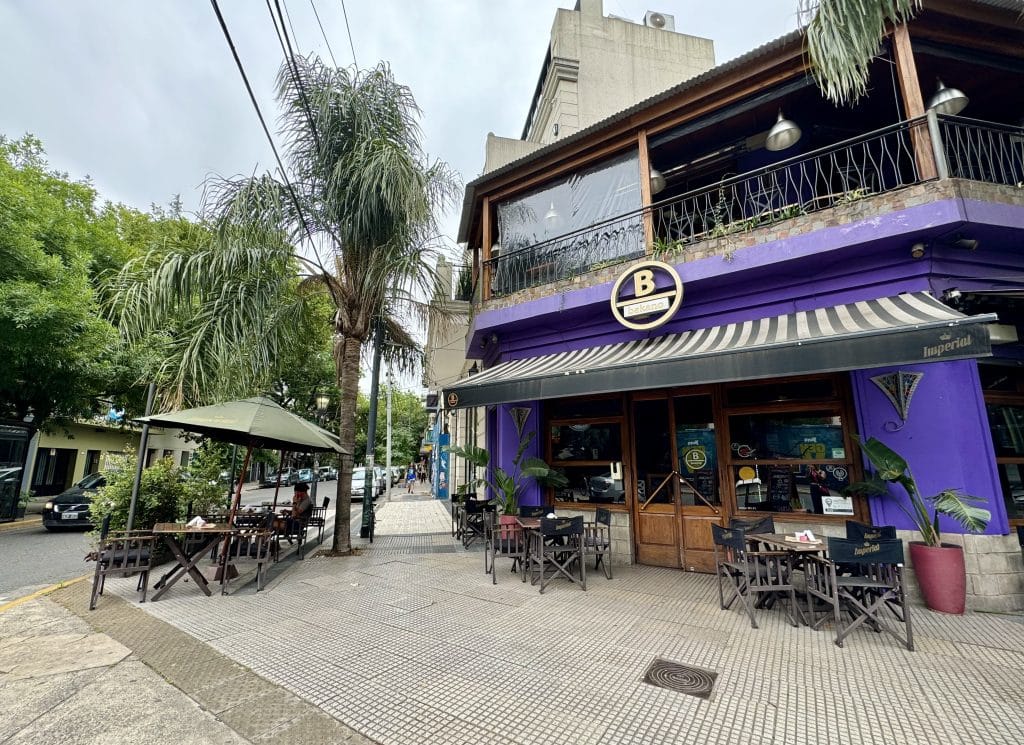
Palermo
Palermo is a trendy, upscale neighborhood with some of the best restaurants, bars, and clubs in the city. It’s actually a huge neighborhood divided into sub-neighborhoods (including Palermo Chico, Palermo Soho, and Palermo Hollywood.)
If you’re familiar with the neighborhoods of Mexico City, you’ll understand what I mean when I say that Palermo reminds me a lot of Roma Norte and La Condesa. In New York, Palermo would be a massive East Village.
Palermo is home to many of my favorite restaurants in Buenos Aires, including Sacro (vegan), Don Julio (steakhouse), Mishiguene (Jewish Argentine cuisine), and La Carnicería (Argentine meat).
In Palermo Soho, you’ll find many of the coolest spots in the city concentrated around the lively Plaza Serrano. In Palermo Chico, the oldest part of the neighborhood, you can explore some of the city’s best museums, like the Museo de Arte Latinoamericano de Buenos Aires (MALBA).
To learn more about Palermo, check out this graffiti and street art walking tour. Accompanied by a local guide, you’ll learn about Palermo’s history and the political origins of its street art. Keep an eye out for Conan O’Brien’s mural with Lionel Messi and Pope Francis — it cracked me up!
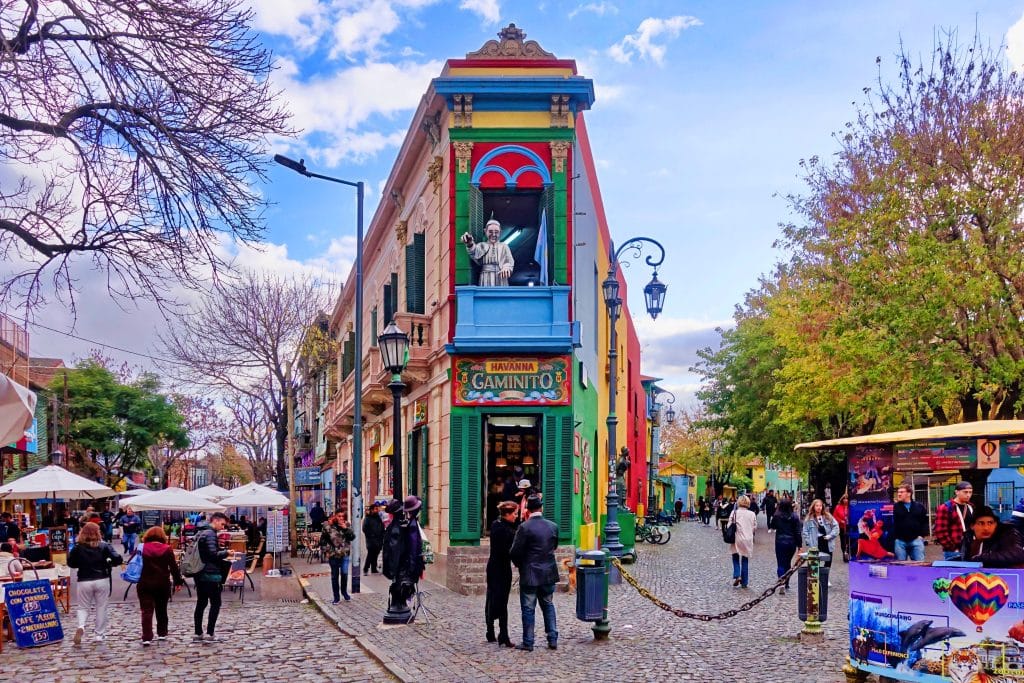
La Boca
This colorful, working-class neighborhood has historically been one of the most diverse neighborhoods in Buenos Aires. Much like New York City was the primary entry point for immigrants in the United States, La Boca is where most immigrants arrived when they came to Argentina in the late 19th and early 20th centuries.
One of the most famous spots in La Boca is El Caminito, a colorful street lined with historic conventillos, or boarding houses. If you’ve seen any photo of La Boca, it’s of this street. The neighborhood was revitalized beginning in the 1950s thanks to the efforts of a local artist, Benito Quinquela Martín.
I strongly recommend exploring La Boca with a guide so that you can fully appreciate the area’s history. This guided walking tour is a great way to explore La Boca in-depth.
Keep in mind that La Boca is one of the neighborhoods in Buenos Aires where you should be even more safety-conscious due to pickpocketing and petty crime.
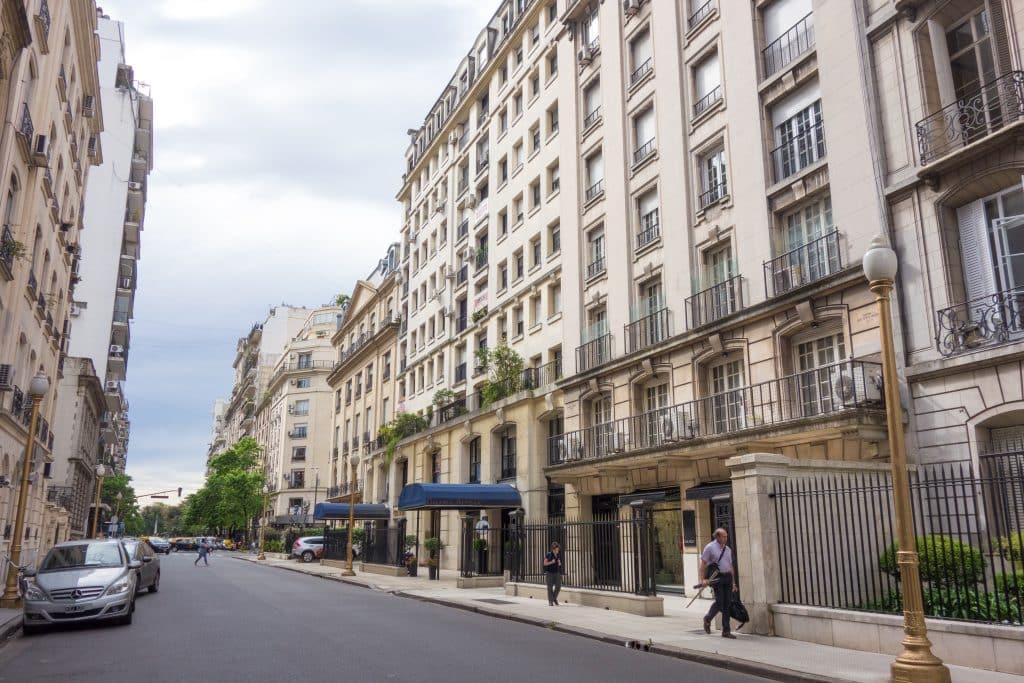
Recoleta & Retiro
When wandering the streets of Recoleta and Retiro, you might seriously question if you’re in Latin America or Paris. These ritzy neighborhoods are filled with luxury shops and hotels, and many of the buildings are reminiscent of Paris’ Haussmannian architecture.
Recoleta is also home to Cementerio de la Recoleta, one of the most unique and beautiful cemeteries in the world, which I think is a must-see in Buenos Aires.
In Retiro, you’ll find the Torre Monumental, a massive clock tower commemorating Argentina’s independence. The park around it is a popular meeting place for locals.
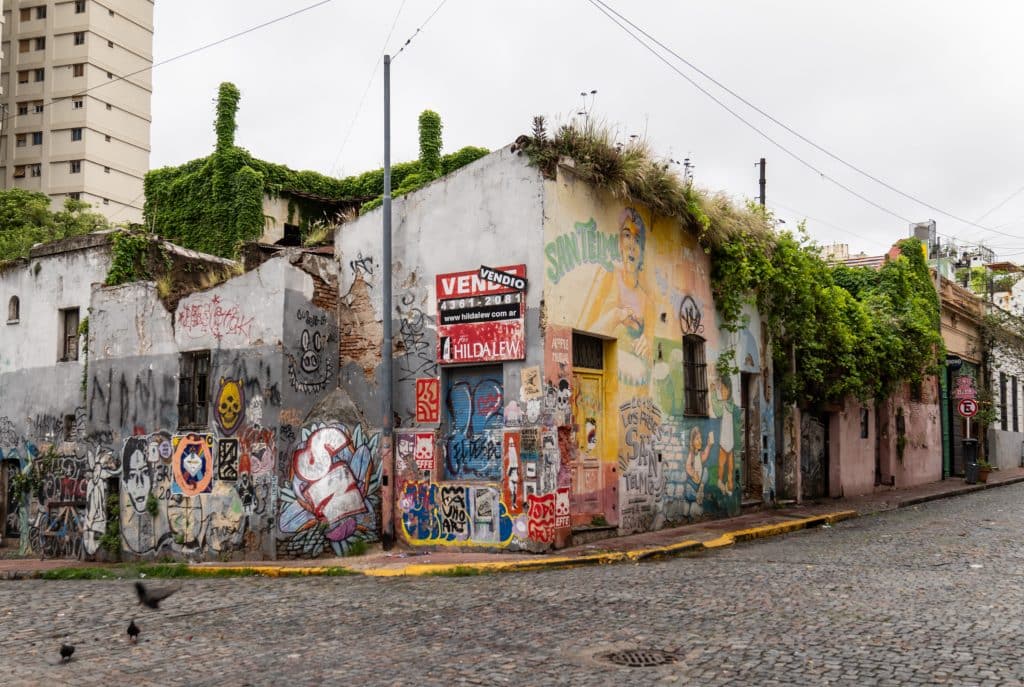
San Telmo
San Telmo is another European-style neighborhood that I think could easily be plunked into Madrid or Rome. This artsy, bohemian neighborhood is extremely popular on Sundays when the outdoor Feria de San Telmo market takes place.
The lively Plaza Dorrego is great for people-watching on weekends, as it’s a popular spot for street tango. San Telmo is also the perfect place for going out until late, with lots of fun late-night bars.
However, San Telmo is another neighborhood where you should be vigilant due to a higher rate of petty crime, including pickpocketing at the busy market.
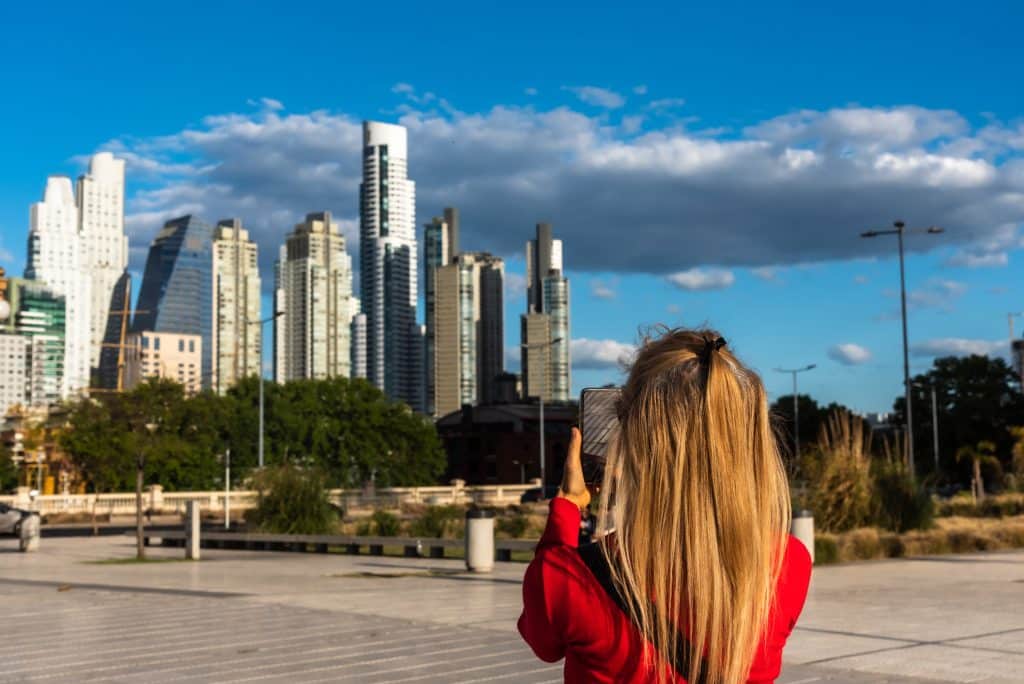
Puerto Madero
Located by the main port of Buenos Aires, Puerto Madero is an upscale, modern neighborhood that is nice to stroll around. It’s the newest part of the city, with lots of shiny skyscrapers, and it’s not far from San Nicolas, where you’ll find many of the most important sites in Buenos Aires.
For a really unique experience, you can enjoy a sunset cruise with an open bar from Puerto Madero. You’ll sail down the Rio de la Plata for one hour, taking in views of the city as the sun sets over the water.
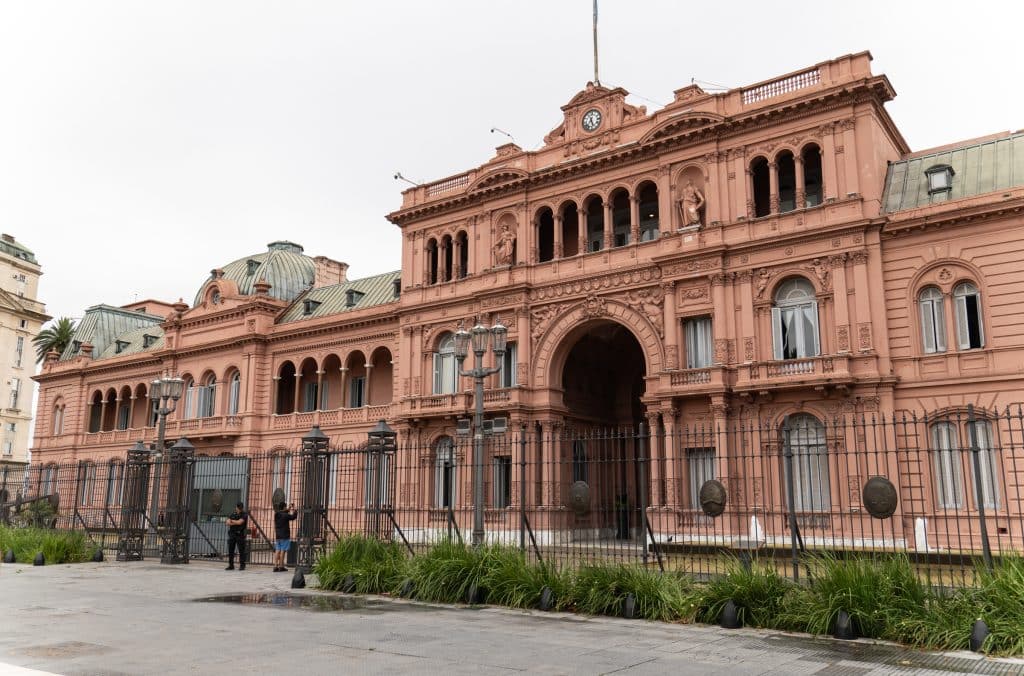
Visit Buenos Aires’s Most Important Sites in San Nicolas
San Nicolas is a historic neighborhood with many important sites you can see in an afternoon. One of the most famous is the Casa Rosada, or Pink House, which is the official workplace of Argentina’s president.
It’s located on the expansive Plaza de Mayo, along with other important sites like the Buenos Aires Metropolitan Cathedral.
In San Nicolas, you can also see the Avenida 9 de Julio, one of the widest avenues in the world, and the Obelisco, a massive monument commemorating the foundation of Buenos Aires. These are the major sights of Buenos Aires!
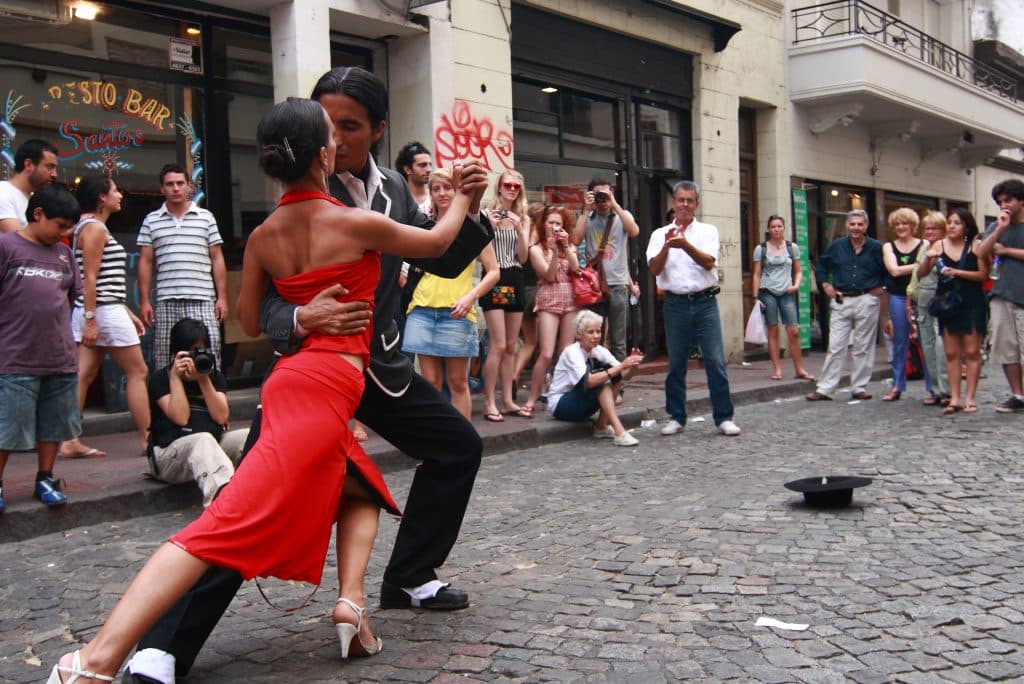
Experience Tango in Buenos Aires
You can’t go to Buenos Aires without experiencing tango at least once. Tango is Argentina’s national dance, and a quintessential activity in Buenos Aires. You have several options for experiencing tango in the city.
The first is going to a tango show. These take place in beautiful historic venues around Buenos Aires, but mainly cater to tourists. La Ventana is a popular tango show, or you can catch a performance at Teatro Astor Piazzolla.
Another option is attending a milonga. These tango evenings are where locals go to dance for fun. They’re not shared super-publicly in English, so ask around on local forums to find out about upcoming milongas. I went to one back in the day, and it was some of the best people-watching of my life.
You can also catch live tango on the streets throughout Buenos Aires. Some of the best spots for this are the San Telmo market on Sundays, and the El Caminito area of La Boca. While watching street tango is free, remember to tip the dancers!
Finally, you can learn to tango yourself! Take a private tango lesson to learn the basic steps of the tango from a pro.
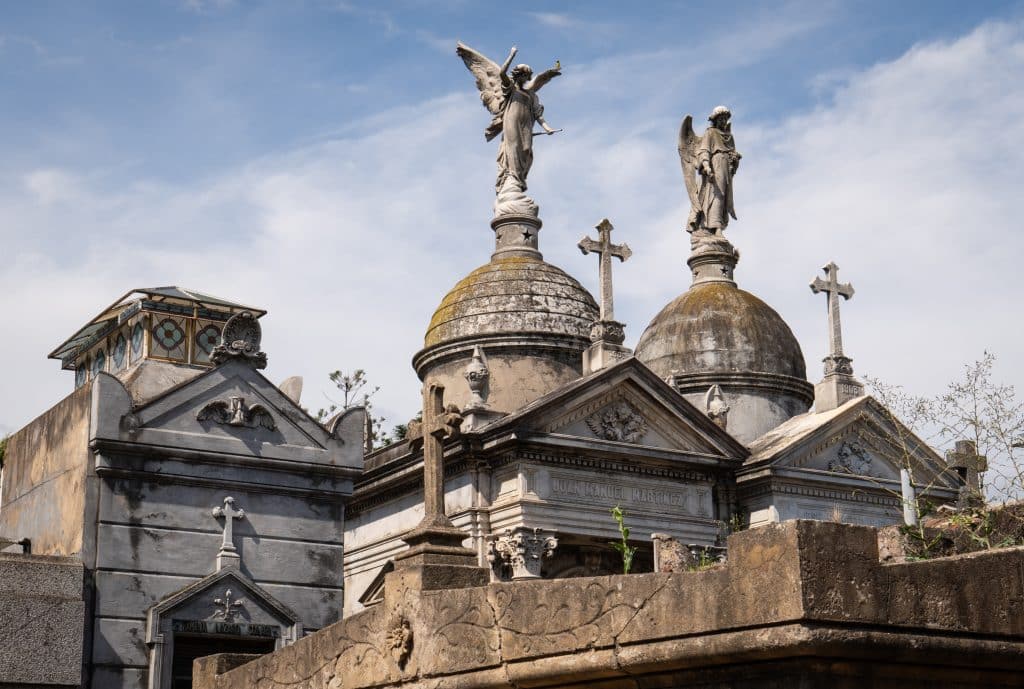
Visit Recoleta Cemetery
Recoleta Cemetery is one of the most iconic cemeteries in the world, and I strongly recommend paying a visit here, even if cemeteries aren’t usually your thing. Filled with rows of imposing stone mausoleums, this city of the dead is worth visiting.
It’s the final resting place of many notable Argentines, including Eva Peron (it’s hard to miss her grave!).
To fully appreciate the cemetery, I recommend taking a guided walking tour. You’ll learn more about the history of the cemetery and the people buried in it. A walking tour is $10 USD, and you must also pay for entry into the cemetery. The entry fee fluctuates, due to the volatile Argentine exchange rate, but it’s around $7 USD and can only be paid by credit card.
Since this is a popular tourist attraction, it’s important to be vigilant against pickpockets here. I was actually pickpocketed near the cemetery back in 2008, so you can bet I watched my bag closely when I returned.
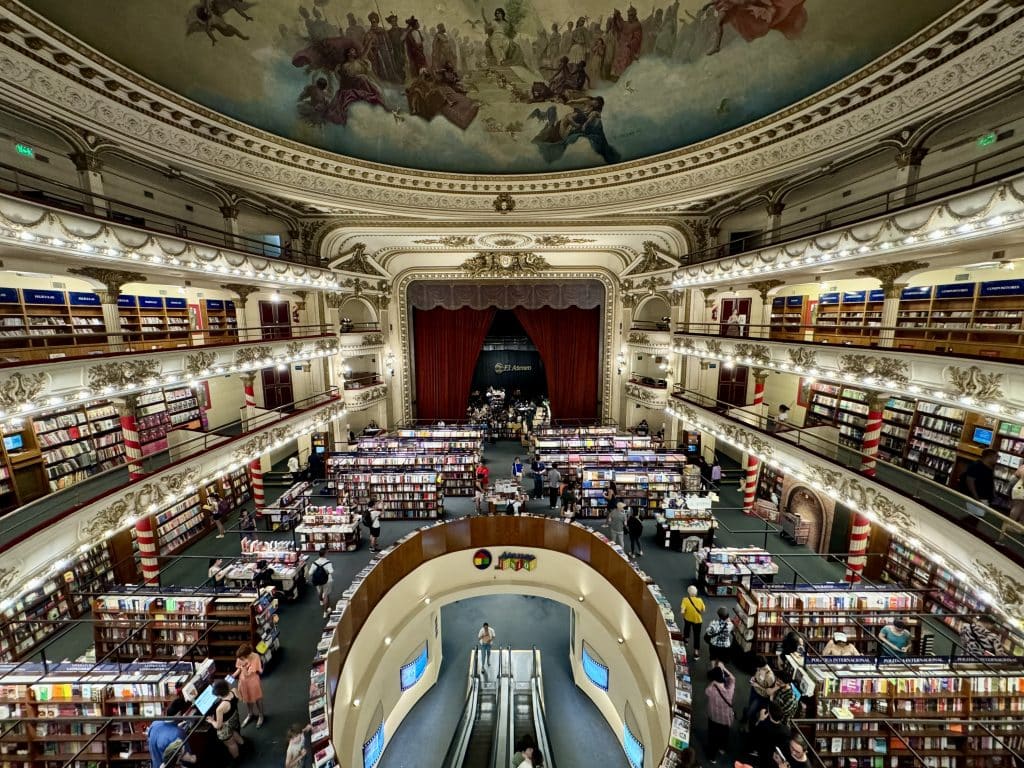
Visit El Ateneo Grand Splendid
El Ateneo Grand Splendid is one of the most beautiful bookstores in the world. This Instagram-worthy bookstore is housed in a magnificent former theater dating back to 1919.
With frescoed ceilings, multi-tiered balconies, and elegant original details, this stunning bookstore is a must-visit for bibliophiles. I was as happy as a clam!
Although most of the books are in Spanish, there’s a small English language section. There’s also a cafe and plenty of cozy seating for reading.
I recommend pairing El Ateneo Grand Splendid with a visit Recoleta Cemetery since they’re within a short walk of each other.
Experience La Bomba de Tiempo
La Bomba de Tiempo is a performance like no other, and one of the wildest nights out I’ve ever had! If you’ll be in the city on a Monday night, you can’t miss this energetic performance.
It’s an incredible live percussion show, and it’s popular with locals and tourists alike. Every performance is unique because it’s based on improvisation between the conductor and the musicians. And everyone is dancing and jumping around to it all!
The show takes place at the Ciudad Cultural Konex. Tickets are 3,200 ARS ($4 USD) and can be purchased online.
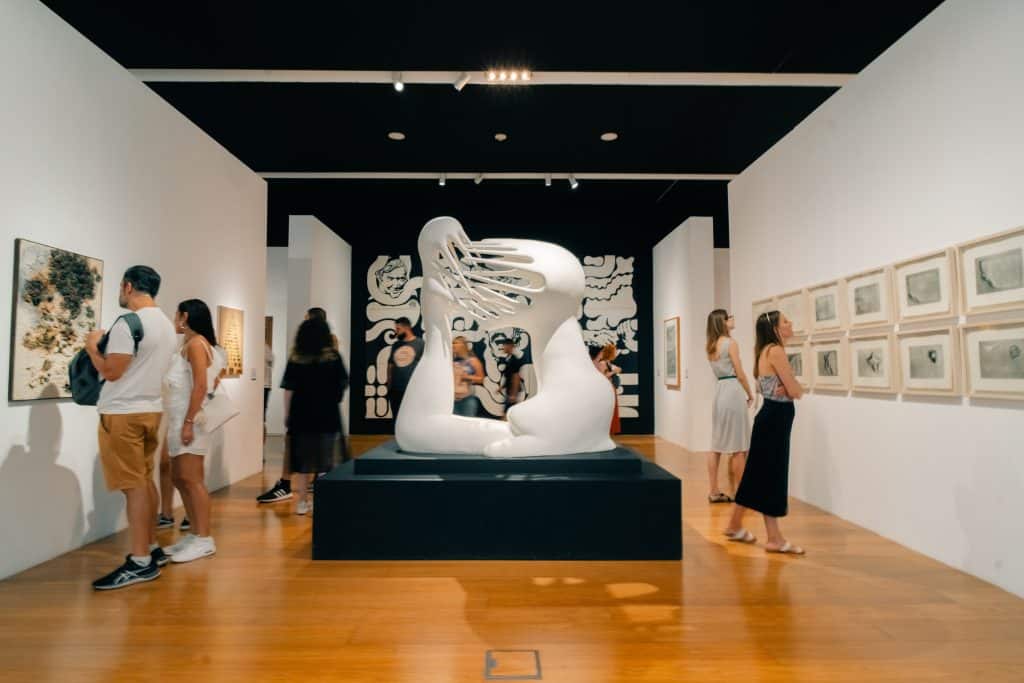
Visit Buenos Aires’s Many Museums
Buenos Aires is a city of incredible museums. If you’re looking for an indoor activity to do on a rainy day or a day when it’s too hot outside, you can easily spend a few hours browsing one of these great museums.
The MALBA (Museo de Arte Latinamericano de Buenos Aires) is my personal favorite, housing an impressive collection of Latin American art.
Another must-visit museum for art lovers is the Museo Nacional de Bellas Artes, which features noteworthy works from artists including Picasso, Van Gogh, El Greco, and more.
A smaller museum worth a visit is Museo Evita, which is dedicated to the life and works of Eva Perón. This museum will give you more insight into one of Argentina’s most polarizing historical figures and features some really cool exhibits, including many of Evita’s iconic outfits. She was tiny!
Some other museums to check out are the Palace of Running Waters (an offbeat museum housed in a historic water pumping station) and the Museo Nacional de Arte Decorativo, which is housed in an opulent early 20th-century mansion.
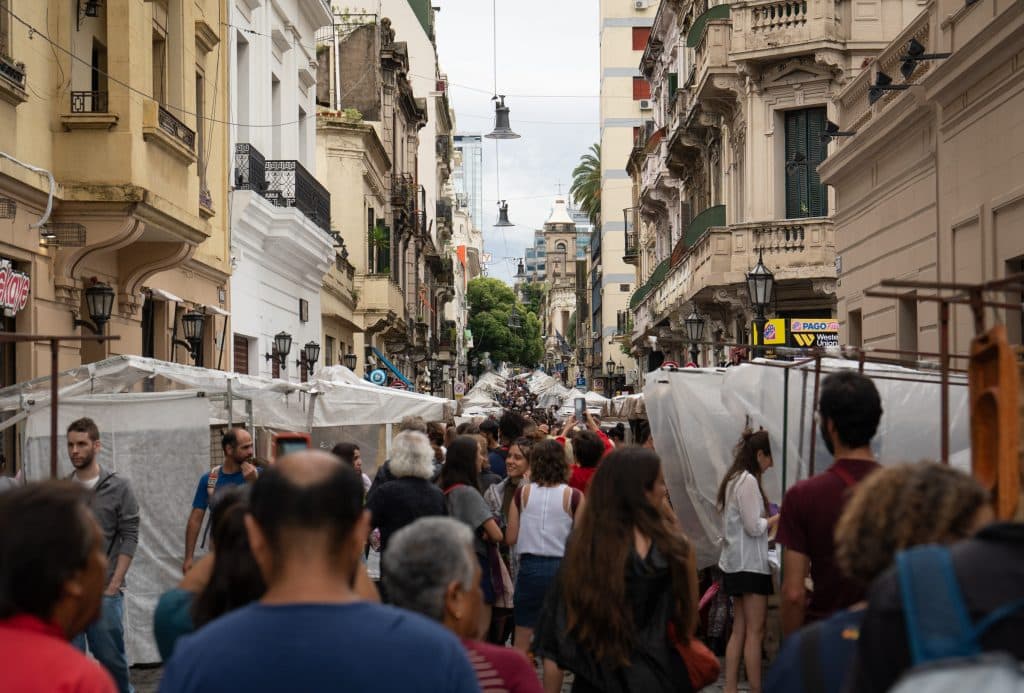
Visit San Telmo Market on a Sunday
One of the best things to do in the bohemian San Telmo neighborhood of Buenos Aires is visiting its famous Sunday market. The indoor Mercado de San Telmo is open every day of the week, but on Sundays, a large outdoor market called the Feria de San Telmo takes place, filling the streets around the market hall with hundreds of stalls.
It’s a great time, with plenty of opportunities for shopping, dining, and watching live tango on the street. You can also explore the antique shops and art galleries on the surrounding streets in San Telmo.
The streets around the market get very crowded on Sundays, so be extra careful about watching your belongings, as it’s a popular spot for pickpockets.
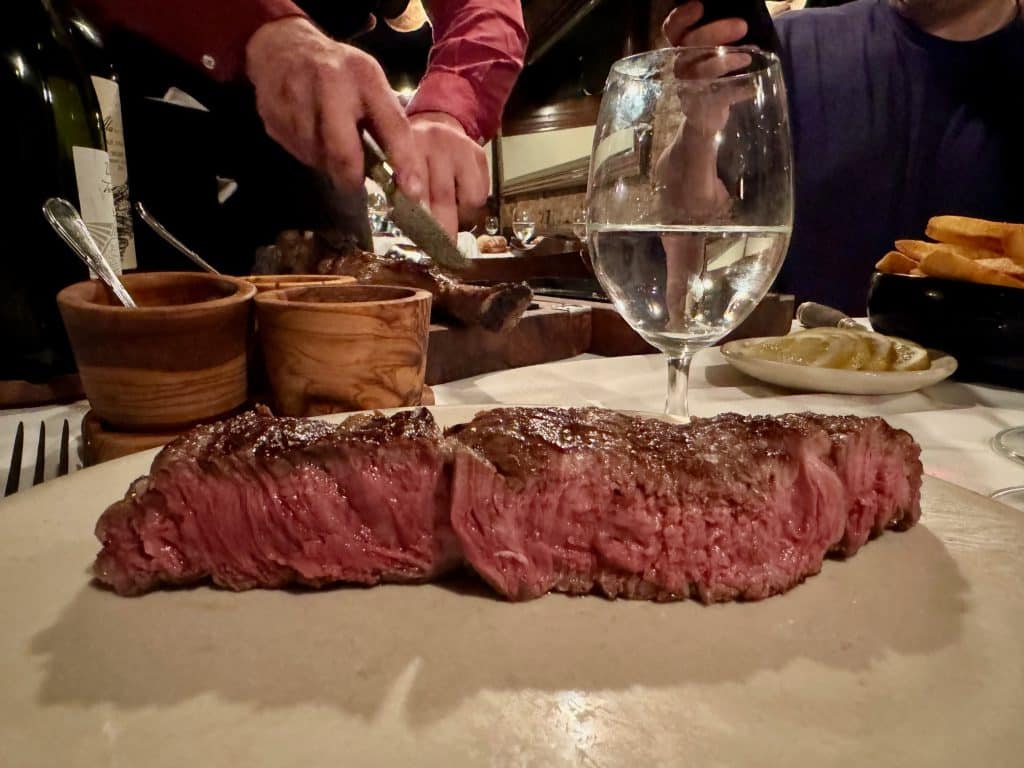
Eat at a Fine Steakhouse
Buenos Aires is home to some of the best steakhouses on the planet, and if you’re a meat-eater in the least, you need to try it! Two of the best spots in town are Don Julio and La Cabrera.
I’ve been to both steakhouses, and most recently ate at Don Julio. This meal was expensive (honestly, the only significantly expensive meal in Buenos Aires, even though we ate at lots of nice places), but the steaks, the sides, the wine, and the atmosphere were top-notch.
Don Julio is an experience, from the tomato vines covering the restaurant to the sparkling wine they serve you while waiting for your table. My top recommendation is to make a reservation VERY early, because they go fast.
And if you’re not a meat-eater, have I got the place for you — Sacro. Charlie and I ended up at this high-end vegan restaurant on a whim, and SURPRISE — it was the best meal we had in Buenos Aires.
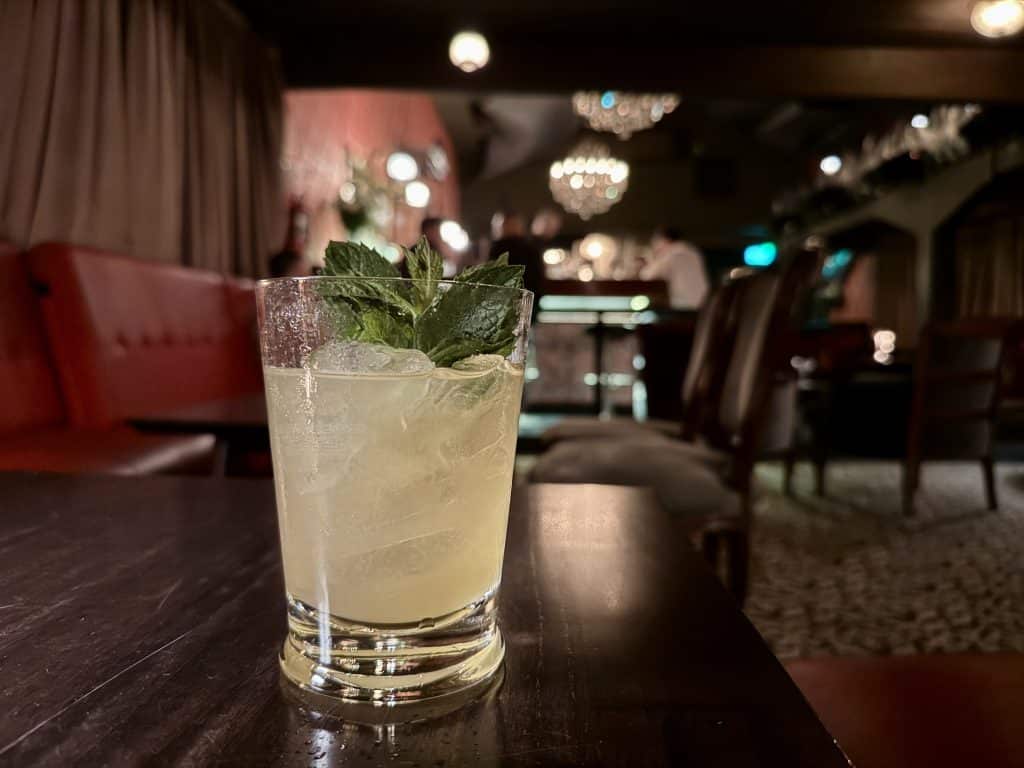
Cocktail-Hop at Buenos Aires’s Unique Bars
Buenos Aires is filled with quirky and unique cocktail bars, especially in Palermo. If you’re looking for a fun night out, cocktail-hop your way through the neighborhood!
Nearby in Palermo Hollywood, you’ll find Frank’s, a speakeasy-style bar with hidden rooms and passageways, all outfitted in dark wood and crystal chandeliers. It feels like you’ve time traveled to a mafia den during the prohibition era!
A few other bars I enjoyed were Tres Monos, which is dark and has a tiki feel to it, and Backroom Bar, which has cool cocktails and jazz shows. Both of these bars are located in the trendy Palermo Soho neighborhood.
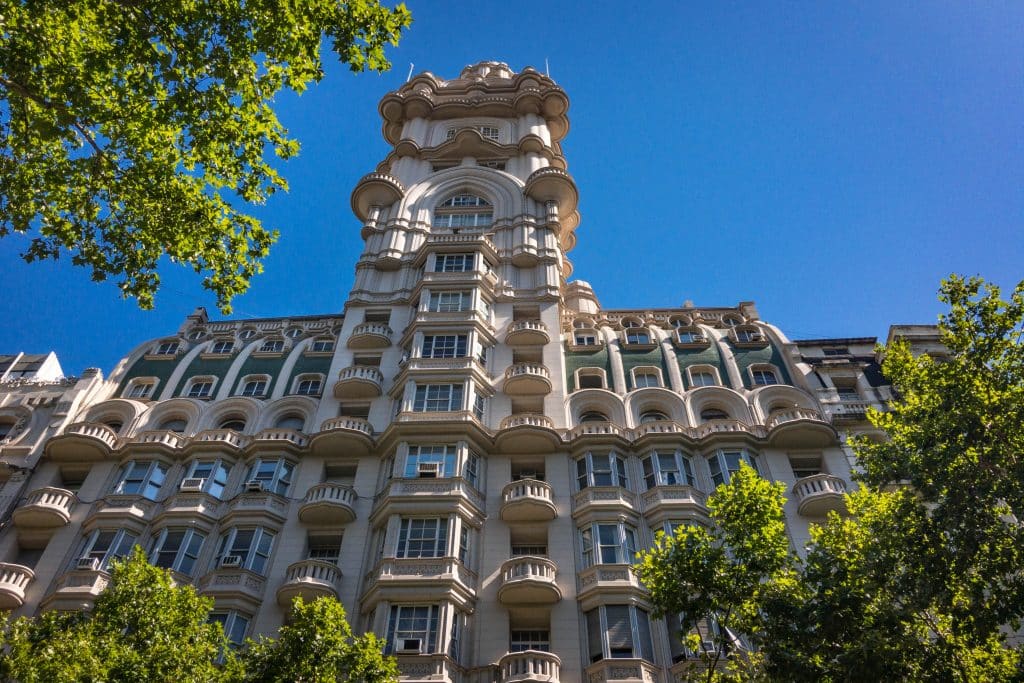
Tour Palacio Barolo
Palacio Barolo is one of the most distinctive buildings in Buenos Aires due to its eclectic architectural style that combines Art Nouveau, Art Deco, and Gothic elements. This historic office building, which was inspired by Dante’s Divine Comedy, opened in 1923.
Today, Palacio Barolo is still home to offices and businesses, but it’s also open for guided tours. This 1.5-hour guided tour will allow you to learn more about the history of this building and explore various spaces, including the upper balconies, which offer some of the best views you’ll see in the city.
For an even more unique experience, this evening tour offers a chance to see Palacio Barolo by night and enjoy a glass of wine as you explore the building with a knowledgeable guide.
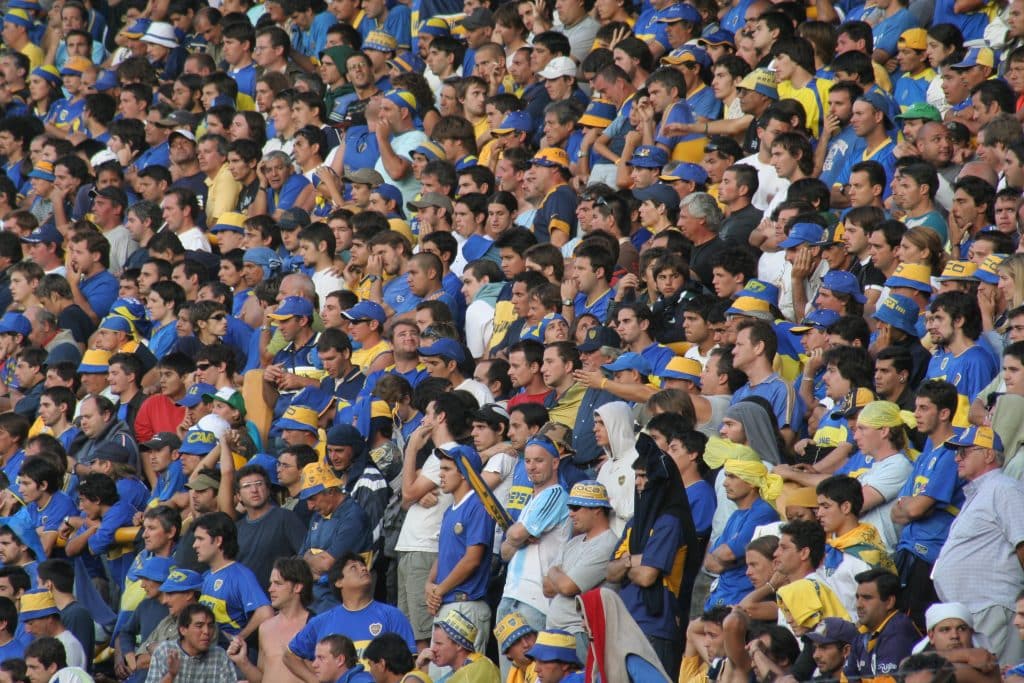
Watch a Football Game
One of the top things to do in Buenos Aires is seeing a football game (meaning soccer, my fellow Americans). Argentines go wild for fútbol, and watching a match is an experience you won’t soon forget. There are numerous football teams in Buenos Aires, but Boca Juniors is one of the most popular.
You can watch Boca Juniors play at La Bombonera, a famous football stadium in the neighborhood of La Boca.
I wouldn’t go solo to a game or even buy tickets on your own unless you have a local who knows what they’re doing. It’s difficult to score tickets, and scams abound. Instead, I’d recommend joining a tour, where they will make sure you have the best experience possible. Know that games can get pretty rowdy!
This tour company is best for getting tickets to a Boca Juniors game. They also have tickets for other teams in Buenos Aires, including River Plate and San Lorenzo.
If you aren’t able to make a game, you can still take a tour of La Bombonera, as well as El Monumental, the stadium of the River Plate football team. This five-hour guided tour is the perfect experience for football enthusiasts.
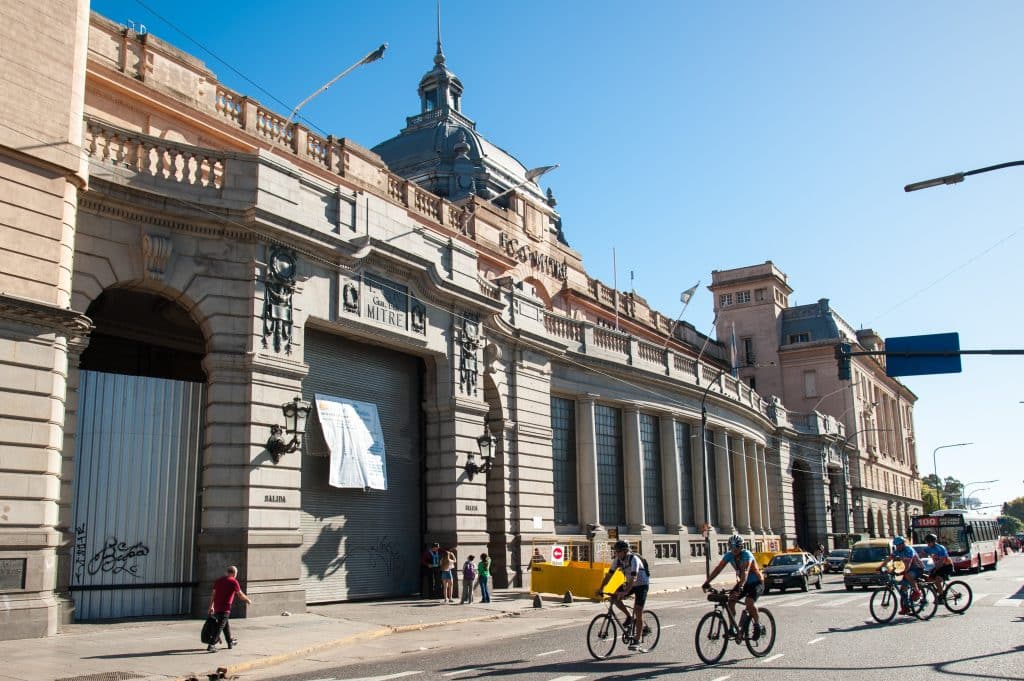
Explore Buenos Aires by bike
Buenos Aires is a huge city, so exploring by bike makes it easier to cover more ground. The city is quite flat, and there are plenty of bike lanes, so it’s accessible even to beginner cyclists. This half-day bike tour is a great way to discover the city on two wheels.
You’ll explore several important neighborhoods in Buenos Aires, including San Nicolas and La Boca. You’ll also cycle through the Reserva Ecologica, the largest park in Buenos Aires, which is located along the waterfront, before finishing the famed Plaza de Mayo.
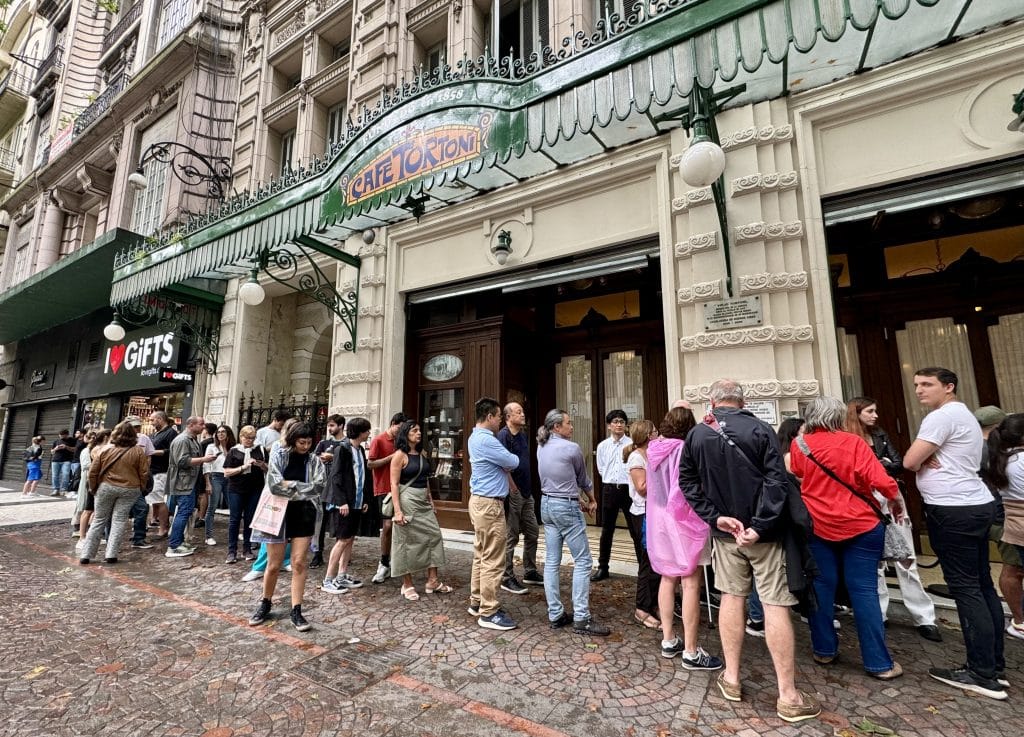
Grab a morning coffee at one of the “Bares Notables”
Buenos Aires is home to a collection of historic cafes called “bares notables” that are beautifully preserved and just as popular today as they were decades ago. In these cafes, time stands still — in the best way.
The most famous of the bares notables is Cafe Tortoni, a French-style cafe dating back to 1858. However, this cafe is extremely popular and it always has a line — either go right when they open for the day, or hit up a lesser-known cafe for something special.
Las Violetas is a great cafe to check out for a cup of coffee and some sweet pastries or a slice of cake. You can find a full list of the historic cafes in Buenos Aires on this website.
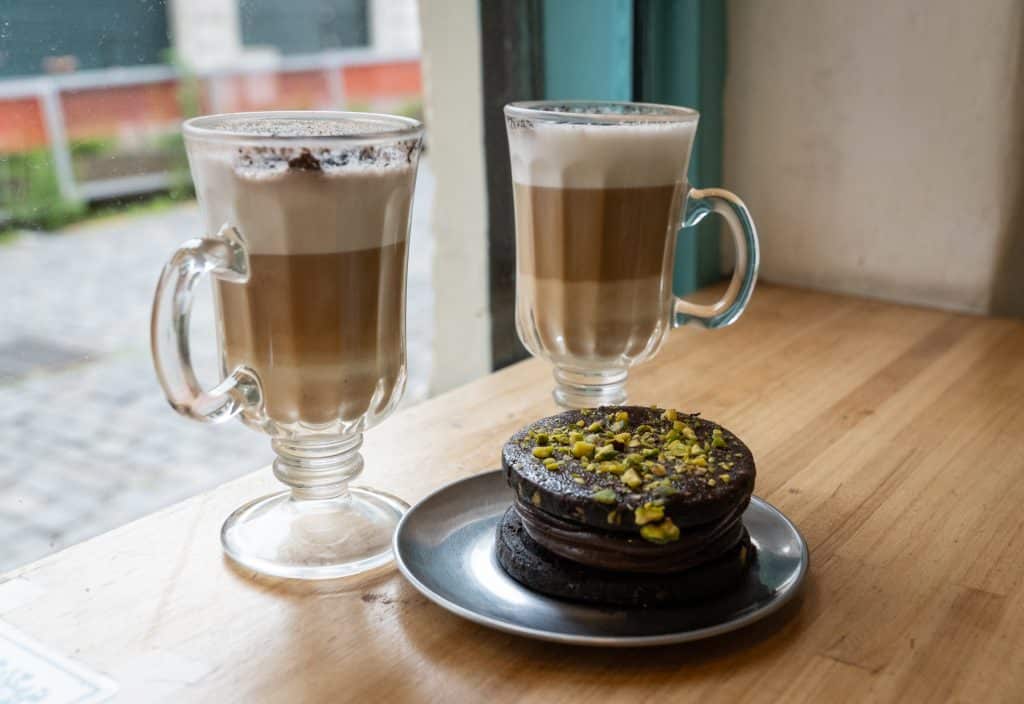
Go on a Buenos Aires Food Tour
The best way to experience the cuisine of Buenos Aires is on a local food tour! A food tour offers a great introduction to the delicious cuisine you’ll find all across the city. Most people think of steak when they think of Buenos Aires, but there’s so much more to Argentine food than that!
This food tour will take you through the trendy Palermo neighborhood, stopping along the way at multiple eateries, from local hole-in-the-wall spots to fine dining restaurants. You’ll try eight different dishes, as well as plenty of Argentine wine!
Another unique activity is the Argentine Experience, an interactive cooking class and tasting. You’ll learn how to prepare empanadas, mate, and alfajores, some of the most popular food and drinks in Argentina. You’ll also enjoy a steak dinner paired with four local wines.
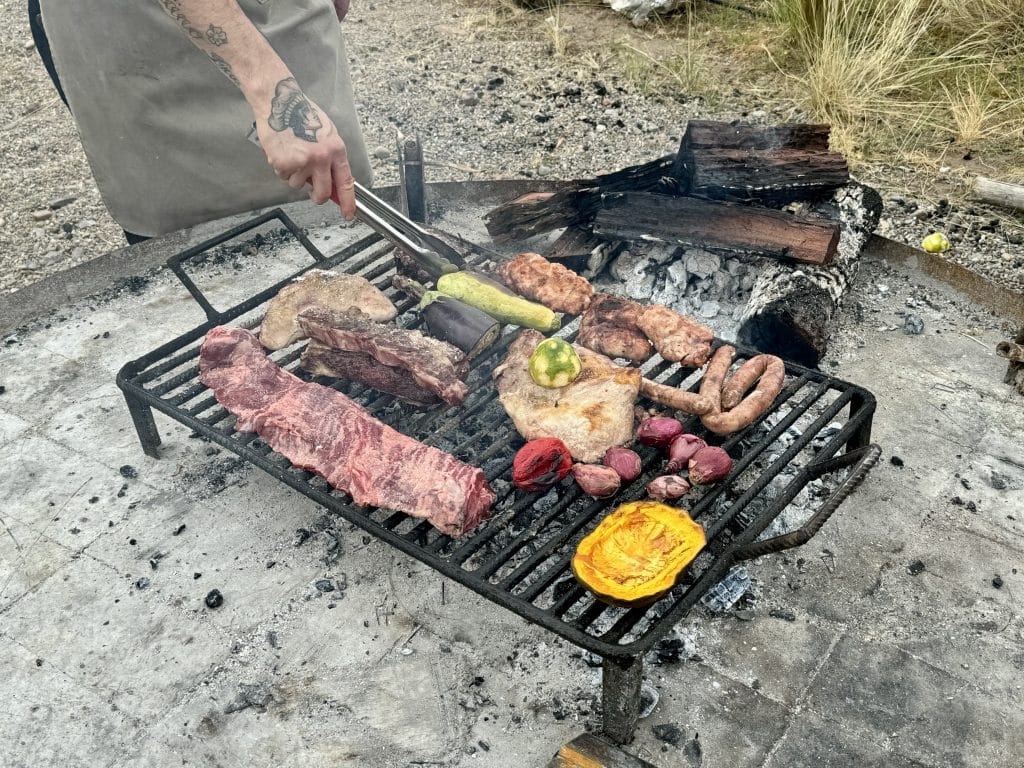
Try authentic Argentine asado
An asado is a traditional Argentine barbecue with LOTS of meat. It refers to both the dish itself and the way the meat is prepared.
If you want to try a typical Argentine asado, this is a great experience to book. Come hungry because over the course of several hours, you’ll enjoy a huge meal including appetizers, various cuts of meat, and dessert, all accompanied by local Malbec wine.
Another cool experience is this rooftop asado in Buenos Aires. You’ll learn about what goes into the preparation of each of the dishes you’ll enjoy, including several types of meat, empanadas, and dulce de leche cake for dessert. And you’ll get to enjoy a great ambiance as you dine outdoors on a rooftop in the trendy Palermo neighborhood.
One more option is this asado experience that takes place in the garden of a local family’s home. You’ll get to help the grill-master chef prepare your asado for dinner, as well as learn the secrets of making the perfect chimichurri sauce to accompany it.

Sample Argentinian mate
If you’re wondering what those pots people are sipping from throughout Argentina, it’s mate (MAH-tay). Mate is a caffeinated herbal beverage that is extremely popular in Argentina. You’ll see people drinking it all day long from little gourd-like cups and metal straws.
Mate is a bit of an acquired taste, but it’s something you must try while in Argentina!
This unique mate tasting experience will teach you exactly how to prepare mate like a real Argentine and give you a taste of this traditional beverage.
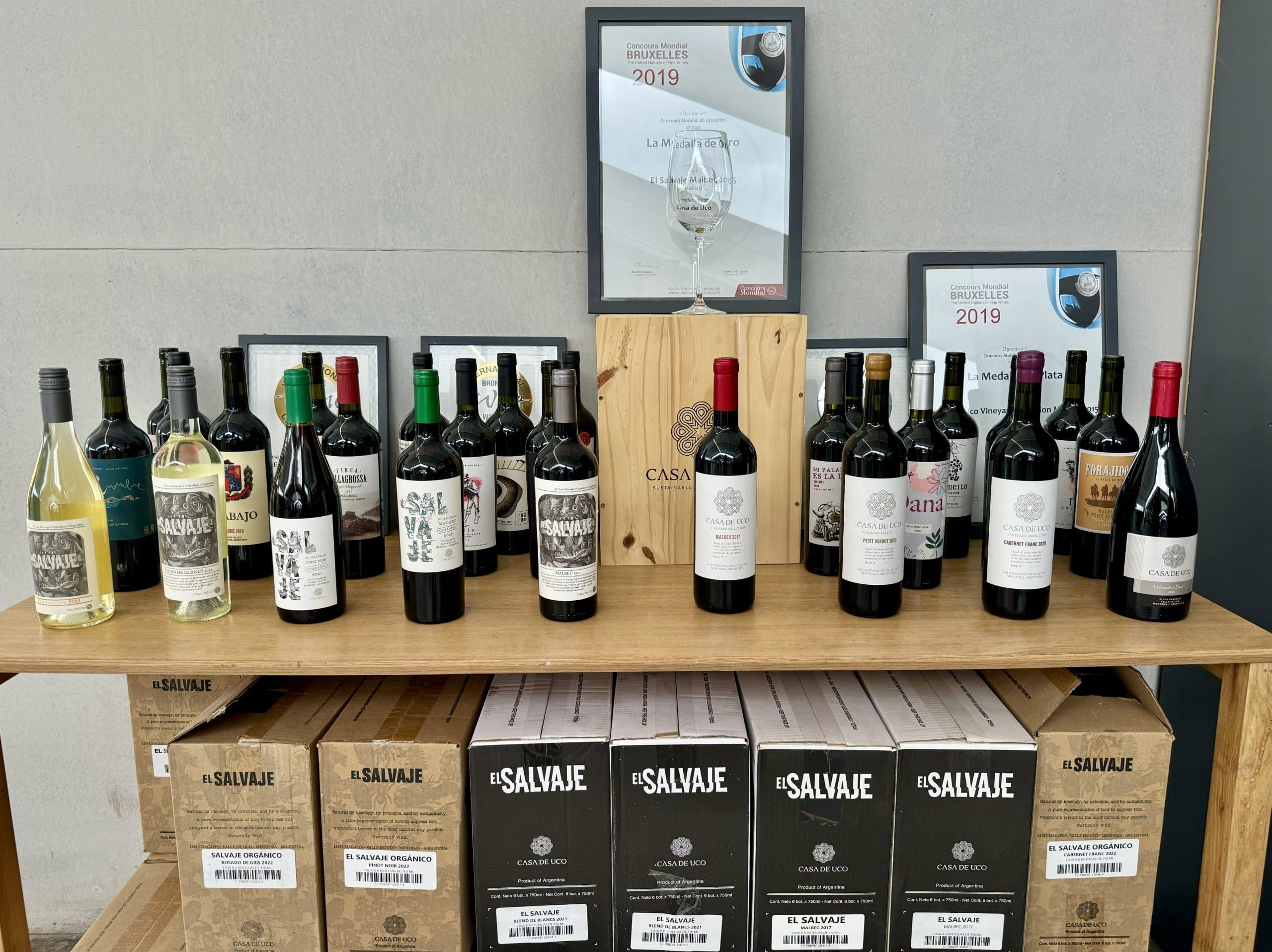
Go wine tasting
Argentina is famous for its wines, especially deep, intense reds like Malbecs. If you can’t make it to the wine hub of Mendoza on this trip, go wine-tasting in Buenos Aires instead! There are plenty of ways to experience Argentina’s wine without straying far from the capital.
While it’s true that most vineyards and wineries are located in the central part of the country around Mendoza, there are also several just outside Buenos Aires.
This full-day tour takes you to Bodega Gamboa, a popular winery on the outskirts of Buenos Aires. It’s perfect for Malbec aficionados, as you’ll get to sample several varieties of this full-bodied red. You’ll also enjoy a picnic lunch in the vineyards with delicious local cheeses.
Or you can try this tango lesson and wine tasting in Buenos Aires. You’ll spend an hour learning about Argentina’s national dance and practicing the basic steps of tango. Then, you can sit down and enjoy a one-hour tasting of local wines, with some freshly-made empanadas to snack on.
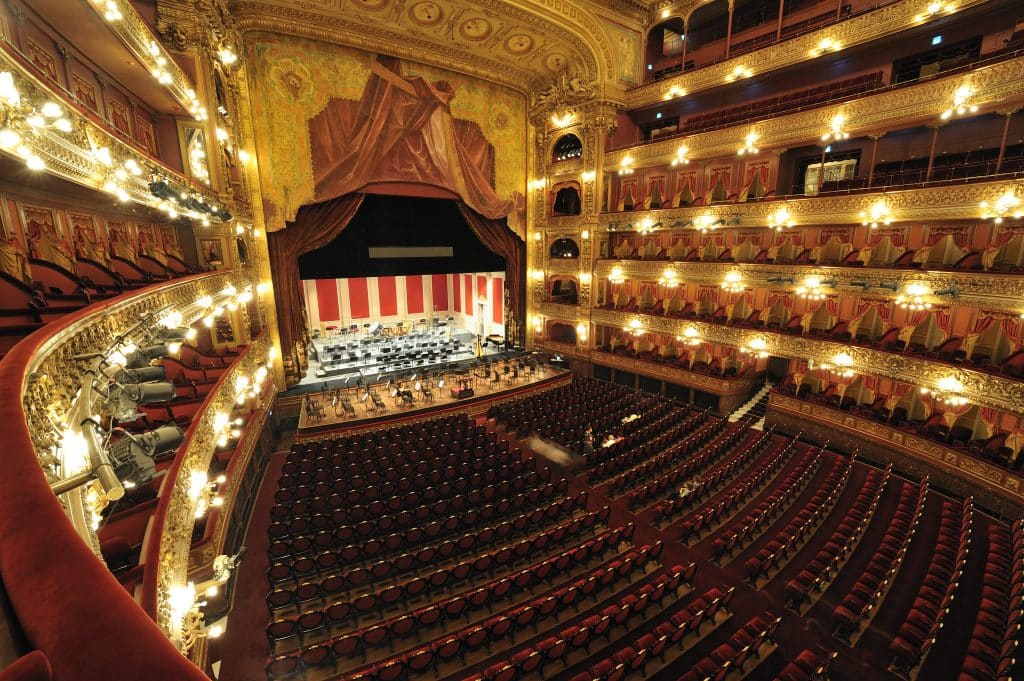
Visit the Magnificent Teatro Colón
Teatro Colón regularly ranks among the best opera houses in the world. This opera house in Buenos Aires opened in 1908 and is renowned for its opulent architecture and interiors. It’s also said to have the best acoustics in the world for performing opera.
While in Buenos Aires, touring the theater is a must if you love visiting beautiful spaces. You can only visit the theater on a guided tour, which you can reserve tickets for here. On a guided tour, you’ll learn more about the history of the building and what makes it so special.
You’ll have a chance to explore several halls inside the opera house, as well as the auditorium itself.
For an even better experience, you can attend a performance at the Teatro Colon. You can see what’s currently on and purchase tickets to performances on the theater’s website.
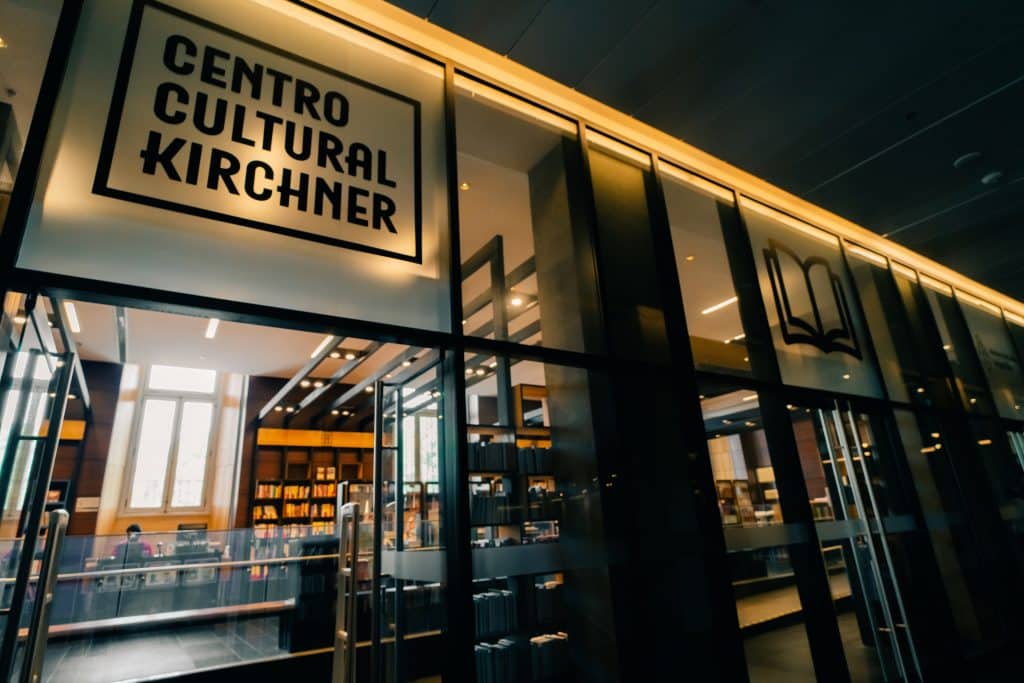
Attend a Cultural Event in Buenos Aires
As a world-class capital city, Buenos Aires is home to some great venues where you can attend cultural events for free or cheap. One of the best such venues is the CCK (formerly Centro Cultural Kirchner), which is one of the largest cultural centers in the world.
The center hosts regular concerts and other performances. All events are free, but you will need to reserve tickets online (and spots fill up quickly!)
Usina del Arte is another cultural center located in the vibrant La Boca neighborhood. The cultural center, which is housed in a former power plant, also has a regular schedule of concerts, performances, and art events. Almost all events are free.
For something a little different, head to a horse race at Hipódromo de Palermo. This historic venue hosts horse races several days per week. Horse racing has been very popular in Buenos Aires since the 19th century, and attending a race is a unique cultural experience.
You can attend races for free every Saturday at the Hipódromo de Palermo.

Learn about polo
While football may be the most popular sport in Argentina, you might be surprised to learn that polo is also hugely popular, especially in Buenos Aires. This is due to the prevalence of horses and the influence of gaucho (cowboy) culture in Argentina.
The Campo Argentino de Polo is a massive polo field located in the heart of Palermo. This venue hosts some of the most important polo events in the country.
You can play polo yourself on this half-day tour from Buenos Aires, where you’ll learn about polo from a pro and have a chance to saddle up and hone your skills. Or, if you’d prefer to watch from the sidelines, this tour includes admission to a nighttime polo match plus unlimited drinks and snacks.

Take an Argentine cooking class
If you want to learn how to cook some staples of Argentine cuisine while you’re in Buenos Aires, take a cooking class! This is a great way to learn more about the history and culture of Argentina and its food. You’ll also get to try your hand at preparing some classic dishes (and, of course, taste-test the results!).
In this 3-hour cooking class, you’ll learn how to prepare empanadas and alfajores, two of the most common snacks in Argentina. Empanadas are made with flour and stuffed with cheese, meats, corn, or other fillings. Alfajores are delicate cookies filled with dulce de leche, a sweet caramel-like sauce that decorates many a sweet dish in Argentina. This class is a great introduction to Argentine cuisine.
For a more in-depth experience, consider this 4-hour cooking class. You’ll prepare a multi-course meal with dishes like chipa (a yuca-based cheesy bread), corn stew with veal, and dulce de leche crepes for dessert.
With both of these experiences, you’ll work alongside a local chef who will show you the right techniques for crafting these delicious dishes while also explaining their history and significance.
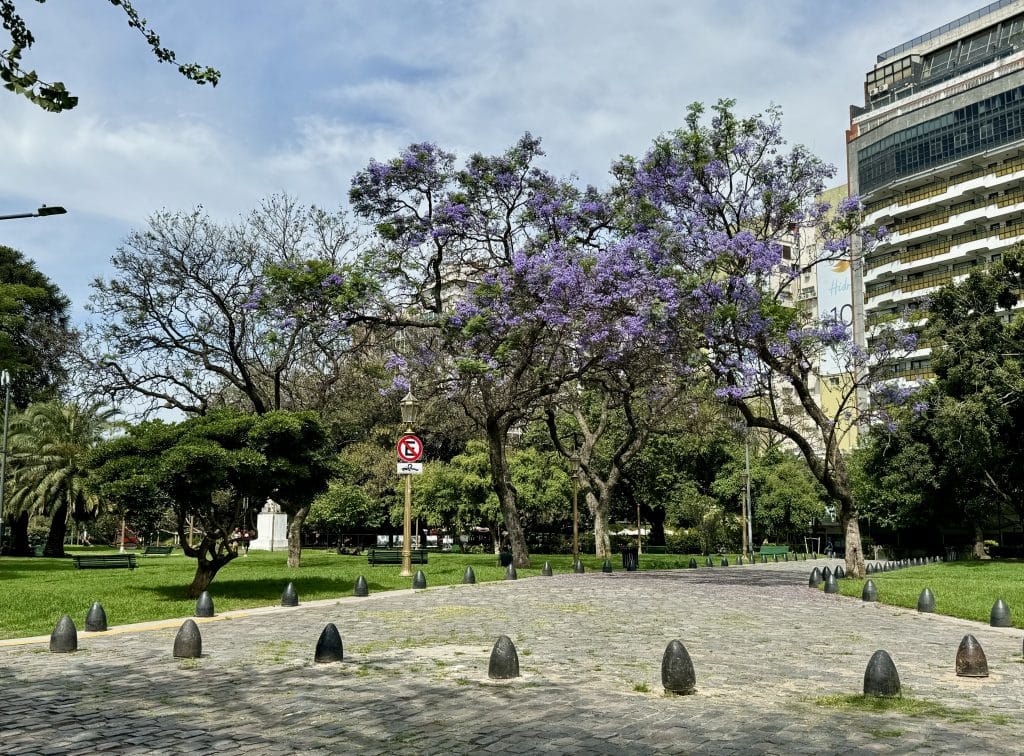
Wander the city gardens
While there are several green spaces throughout Buenos Aires, you’ll find the biggest and the best in Palermo. Here, there are multiple interconnected public parks and gardens to explore. The locals of Buenos Aires love this area, which is known as the Bosques de Palermo (Palermo Woods), for walking, cycling, and roller skating.
The Japanese Garden is a must-visit. This tranquil oasis opened in 1967 to celebrate a visit from Japan’s emperor and his wife. There’s a small admission fee of 1,500 ARS ($1.85 USD), but it’s worth the cost to stroll around this relaxing garden. There’s also a Japanese cultural center and restaurant inside the garden.
Nearby, the Parque El Rosedal is also worth visiting. This sprawling, elegant park is filled with flowers, including numerous varieties of roses. While you can visit year-round, it’s most beautiful in the summer when the roses are in bloom.
You can also check out the Buenos Aires Botanical Gardens while you’re in the area. This is a smaller garden, but it’s perfect to visit on a hot day because there’s plenty of shade.
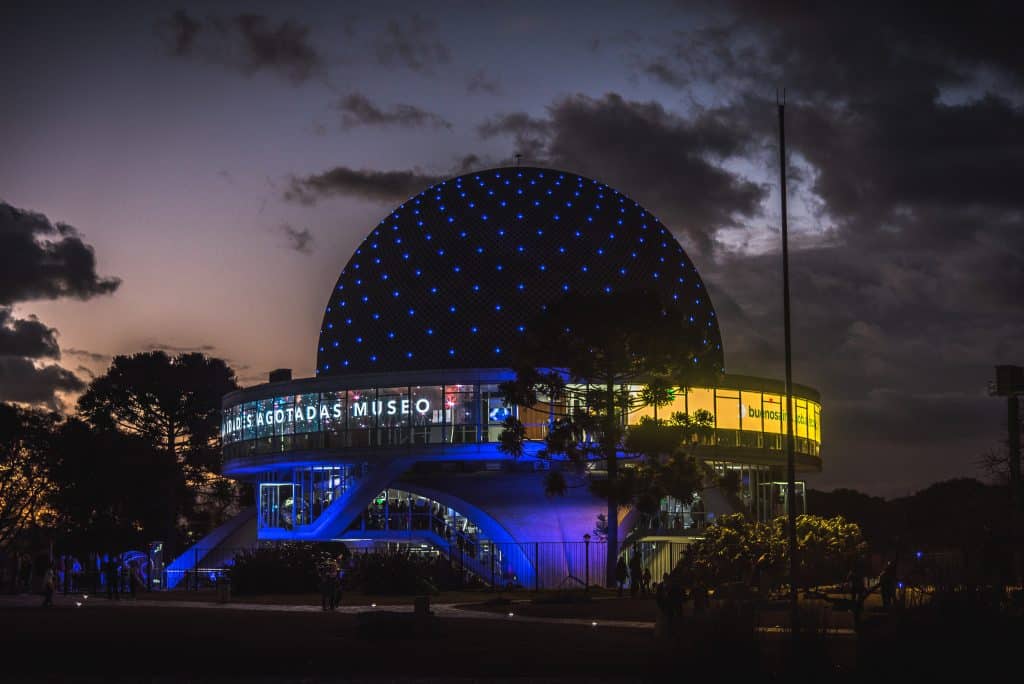
Stargaze at Planetario Galileo Galilei
After you’ve discovered the parks and gardens of Buenos Aires, head over to the Planetario Galileo Galilei for some stargazing. This planetarium is located close to the parks, and it resembles a giant UFO.
You can purchase tickets to a stargazing show inside the planetarium for 3,000 ARS ($3.68 USD.) It’s a 45-minute show, and it’s important to note that it’s all in Spanish.
There’s also a small museum with exhibits at the planetarium.
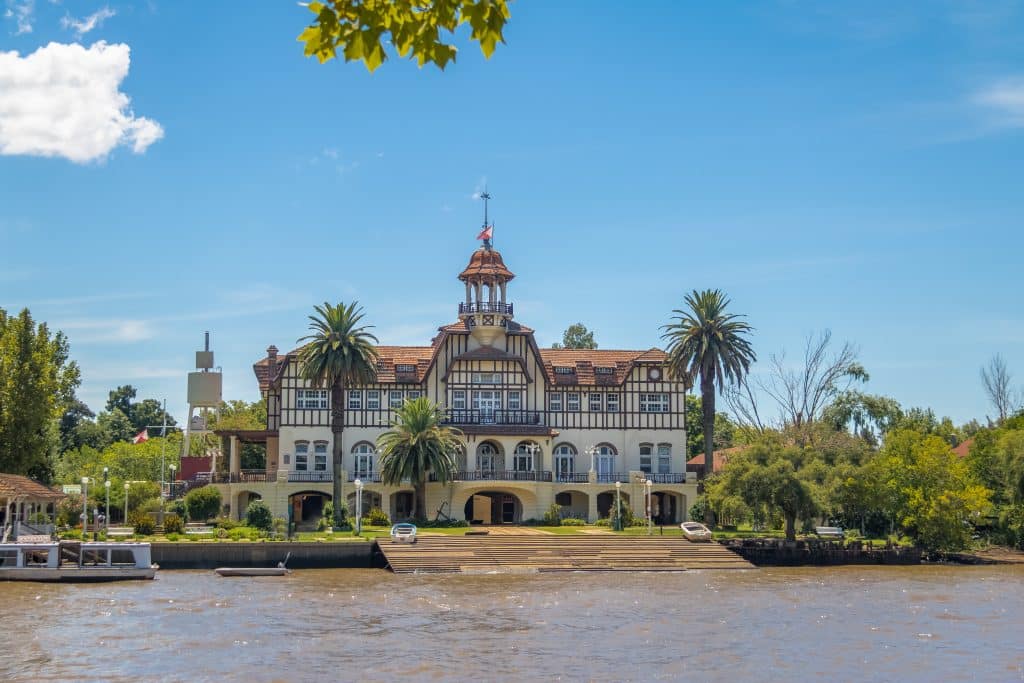
Take a day trip to the Tigre Delta
One of the best day trips from Buenos Aires is the Tigre Delta. If you ask my friends in Buenos Aires, they will always recommend this as their top day trip from the city.
The Tigre Delta, one of the largest natural deltas in the world, is just a 1.5-hour boat ride away from Buenos Aires. It’s home to cute little towns, buildings with interesting architecture, and low-lying wetlands.
This day tour from Buenos Aires will take you by boat to the Tigre Delta, with stops in historic San Isidro and Tigre where you’ll be able to explore local markets and sample homemade empanadas.
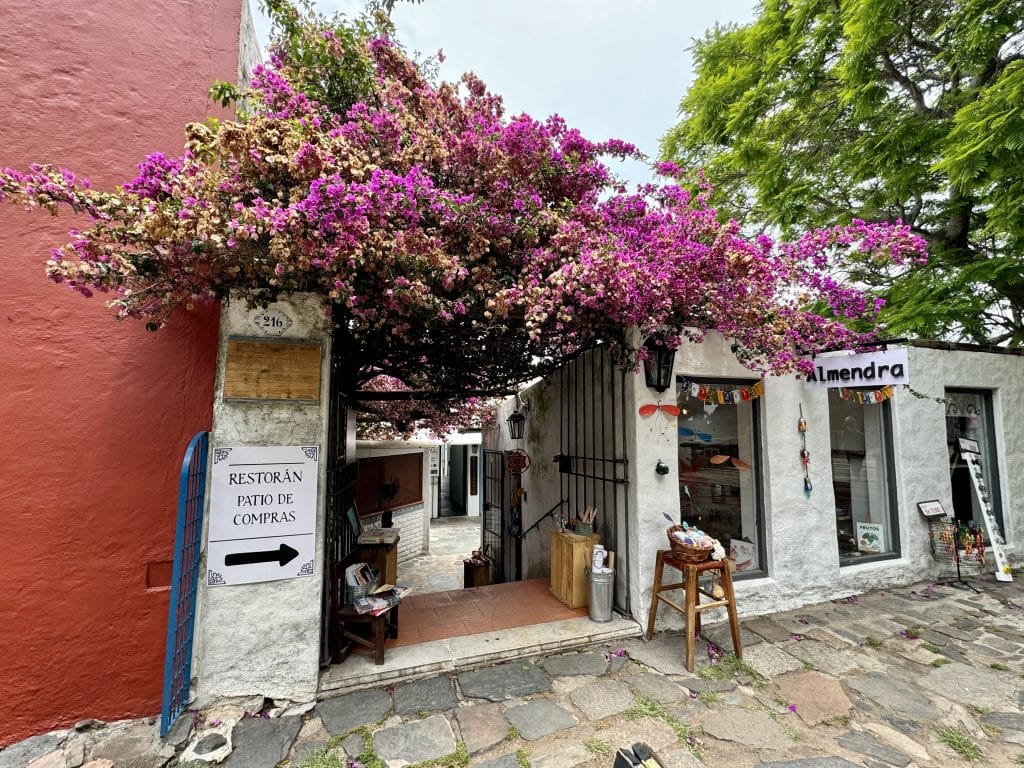
Take a day trip to Colonia del Sacramento, Uruguay
Did you know that you can visit another country on a day trip from Buenos Aires? The town of Colonia del Sacramento in Uruguay is just one hour and 15 minutes by ferry from Buenos Aires.
This charming small town, a UNESCO World Heritage Site, is well worth a visit, with picturesque cobblestone streets, colonial architecture, cute cafes, and artisan shops.
You can visit Colonia del Sacramento on your own (I recommend booking ferries in advance using DirectFerries, as the ferry company wouldn’t accept foreign credit cards) or with a group tour.
This group tour to Colonia del Sacramento includes hotel pick-up and drop-off, ferry tickets, and a two-hour walking tour in Colonia. You’ll also have a professional guide with you all day.
If you’re visiting Colonia on your own, I recommend giving yourself five hours for exploration in town, and you’ll want to get an early start — lines for passport control in both Argentina and Uruguay can take a while, and you’ll have to pass through them twice.
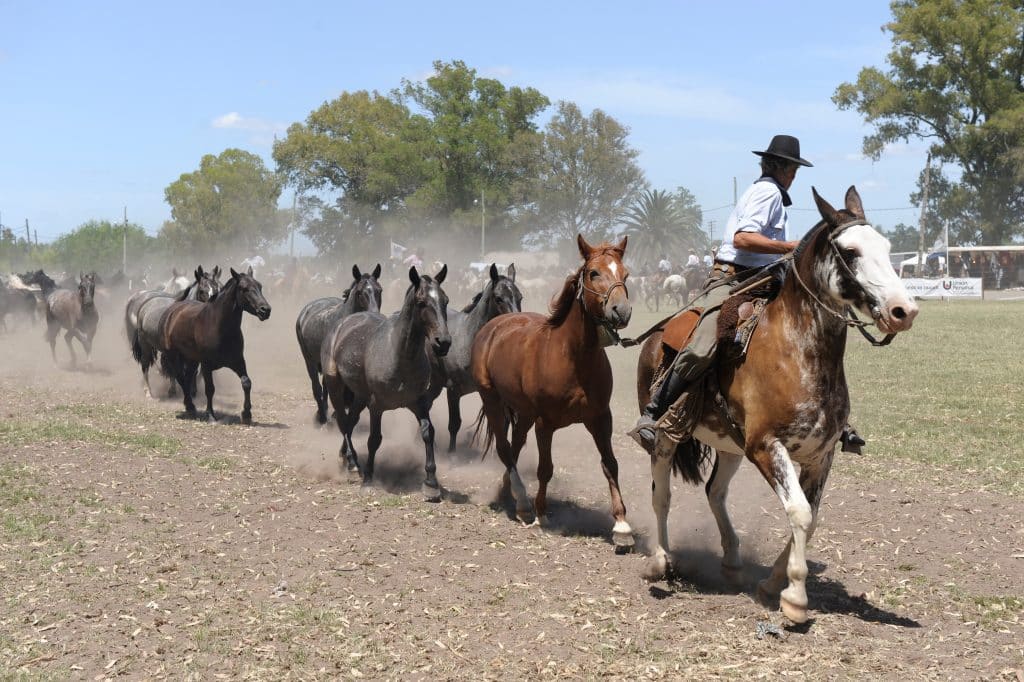
Take a Day Trip to an Estancia
Another one of the best day trips from Buenos Aires is visiting an estancia, or cattle ranch, in the countryside. Gaucho (cowboy) culture is a huge part of Argentine life, yet most visitors to Buenos Aires have no idea this even exists.
This day tour from Buenos Aires is a great option if you want to visit a ranch. You’ll head out to the Pampas, or plains of Argentina, and visit a traditional ranch where you’ll be able to go horseback riding, watch a folklore show, and enjoy a typical asado lunch of grilled meats.
You’ll also have the chance to watch gauchos at work and visit the small, historic town of San Antonio de Areco.
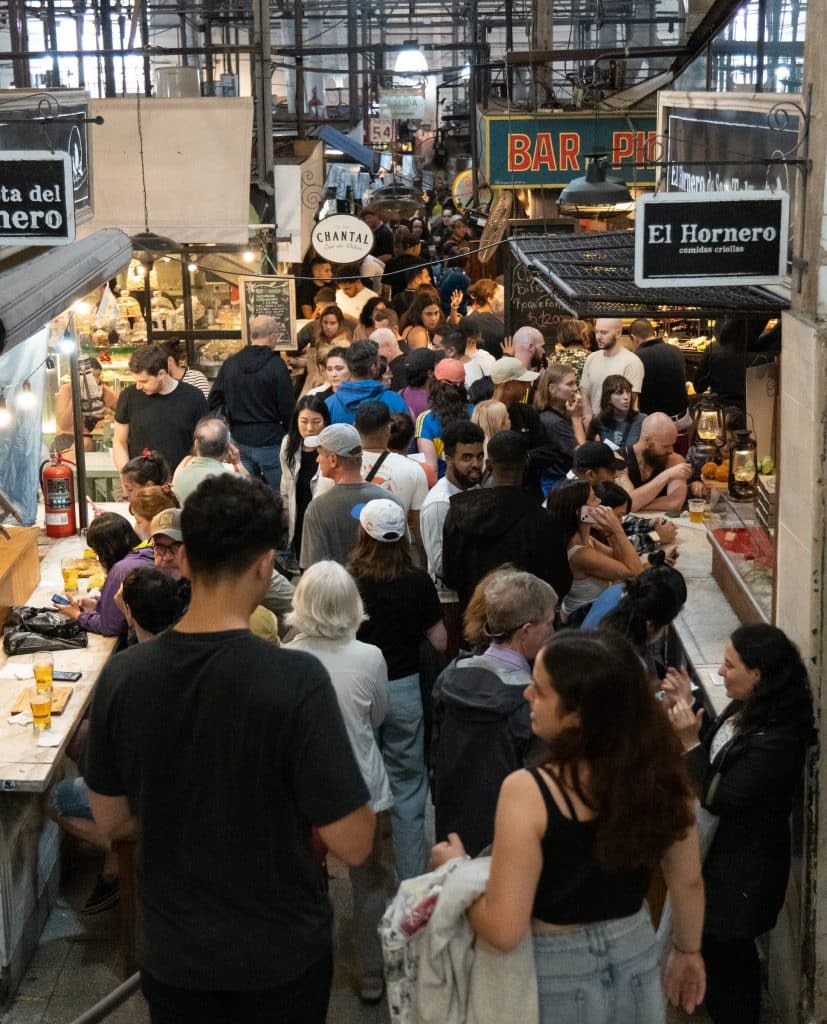
Is Buenos Aires Safe?
Is Buenos Aires a safe city to visit? How safe? Well, to start, the vast majority of travelers go to Buenos Aires and have a great time, with no bad incidents.
But this is a city where you need to be more vigilant about pickpocketing and theft. I liken Buenos Aires to Paris or Barcelona — a great city, but absolutely crawling with pickpockets, and you should expect them to be among you at any time.
Keep an eye on your belongings, use a good purse that zips, and you may prefer taking an Uber at night rather than public transit. (And be sure to check out my top travel safety tips for women.)
You might have noticed that I mentioned that there are some areas in town where you need to be especially vigilant: San Telmo (especially at the market on Sunday), La Boca and El Caminito, and the area around Recoleta Cemetery (where I myself was pickpocketed on my first day of solo travel EVER in 2008).
Another big issue is that Argentina is going through economic and political instability. The value of the Argentine peso fluctuates continuously, so much that restaurants sometimes change their prices on a daily basis.
There are two separate exchange rates, and you as a tourist can get a better rate for your money. ATMs and credit cards will give you good rates, but you can only take out a small amount of cash at a time.
It’s a good idea to check in on the local news before and during your trip, just so you can be aware of what’s going on. Like any other city, if there’s protest or political event taking place, avoid that neighborhood.
I’ve safely traveled during times of protest in Thailand, France, Greece, and the US and life is usually normal away from the protest areas. Just stay informed.

How Much Time to Spend in Buenos Aires
How much time should you spend in Buenos Aires? Honestly, more than you think you need.
I most recently spent a week in Buenos Aires and wish I had spent much longer. Even with seven days, there was so much I didn’t have time to do!
For that reason, I recommend spending at least three full days in Buenos Aires proper so you have time to explore the city properly. If you have a fourth day, that would be a nice opportunity to visit Colonia del Sacramento or the Tigre Delta — or continue exploring the city.
I see a lot of people allot just a day or two to Buenos Aires — often when planning a trip to Patagonia or Antarctica — and if that’s you, consider adding on a few more days.
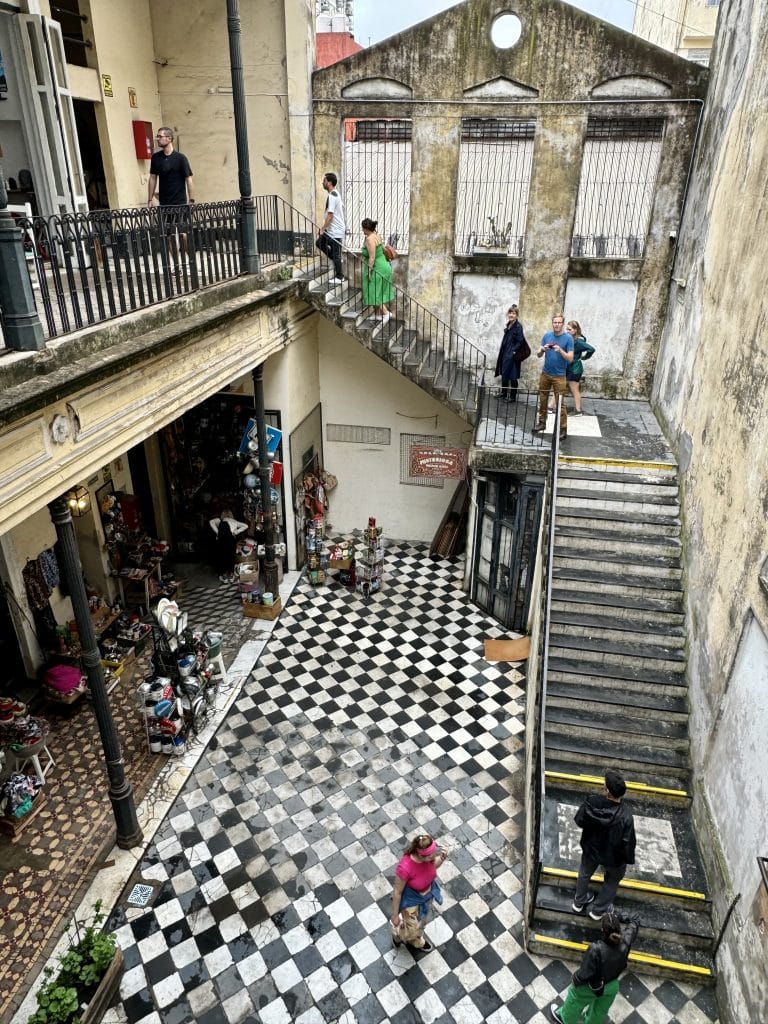
How to get to Buenos Aires
How can you get to Buenos Aires? As one of the largest cities in South America, Buenos Aires is a major air hub with plenty of international flights from North America and Europe.
There are two airports in Buenos Aires — EZE hosts primarily international flights with some domestic options, and is an hour’s drive from the city, while AEP is within the city (it took us 25 minutes to get there from Palermo) and mainly offers domestic flights.
There are also ferries from the cities of Colonia del Sacramento and Montevideo in Uruguay, and plenty of buses to further destinations in Argentina and beyond. (Just keep in mind that Argentina is a huge country, and bus journeys can be quite long!)
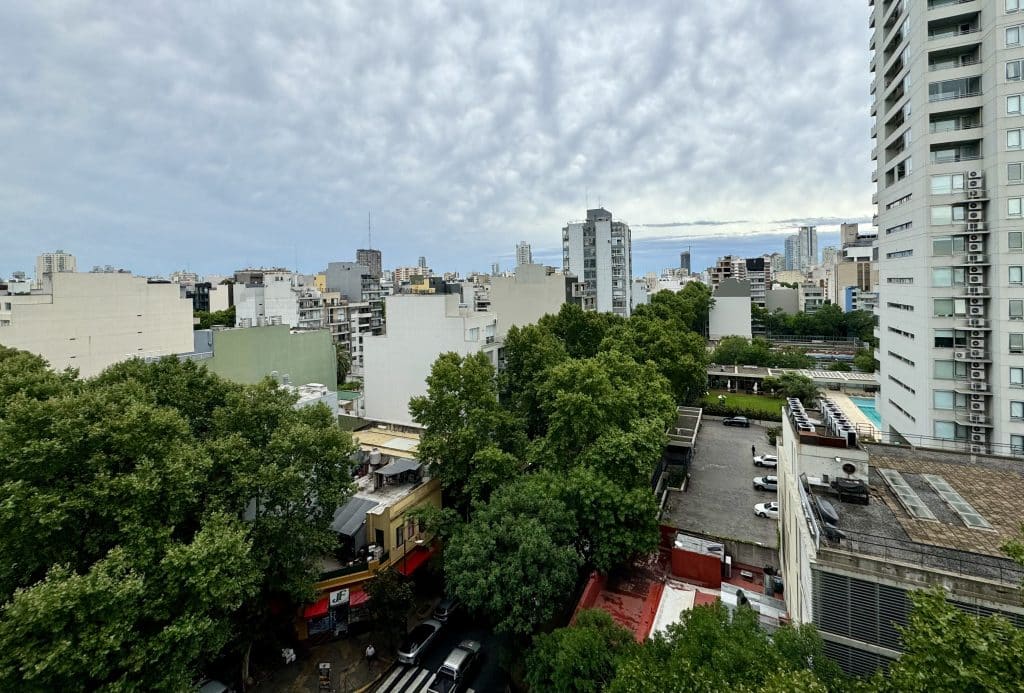
Where to Stay in Buenos Aires
Buenos Aires, as you well know by now, is a huge city with tons of different neighborhoods — so it’s important to choose a good one. My personal favorite neighborhood to stay in is Palermo, with tons of fabulous restaurants and bars, gardens, cool shops, and a lot of buzzing energy.
The following properties are the top-rated options in Palermo.
- Top-Rated Luxury Hotel in Palermo: BE Jardin Escondido By Coppola is a luxurious boutique hotel in Palermo Soho where Francis Ford Coppola stayed while shooting a movie in Buenos Aires.
- Top-Rated Mid-Range Hotel in Palermo: The best mid-range hotel in Buenos Aires is Magnolia Hotel Boutique, which offers chic and comfortable rooms in the heart of Palermo.
- Top-Rated Budget Hotel in Palermo: Palermo Bridge is a solid budget hotel in a great location just a short walk away from Buenos Aires’ sprawling city gardens.
- Top-Rated Hostel in Palermo: For budget travelers and backpackers, PH Palermo Hostel is an affordable place to stay in a fun, lively area.
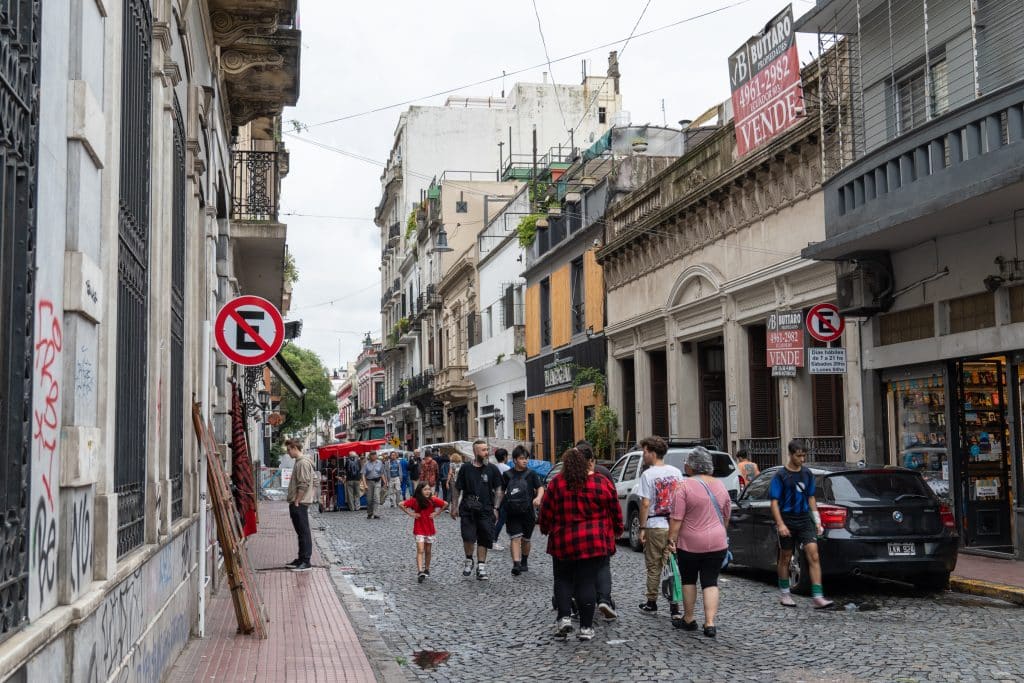
Best Time to Visit Buenos Aires
When should you go to Buenos Aires? I feel like there’s never a bad time to visit Buenos Aires – yes, the seasons are flipped from the northern hemisphere, but the city has mild winters that are great for exploring. The climate is a bit more like Houston than Boston, so to speak, so don’t expect any snow in July.
Keep in mind that Buenos Aires’s high season is during the summer months — December to March — and this can often be a hot and humid time to visit. While the city is on the Río de la Plata, you don’t get the cool breezes that you get in coastal cities.
You might want to time your trip for the shoulder season (March to May or September to November) for nicer weather with fewer crowds.
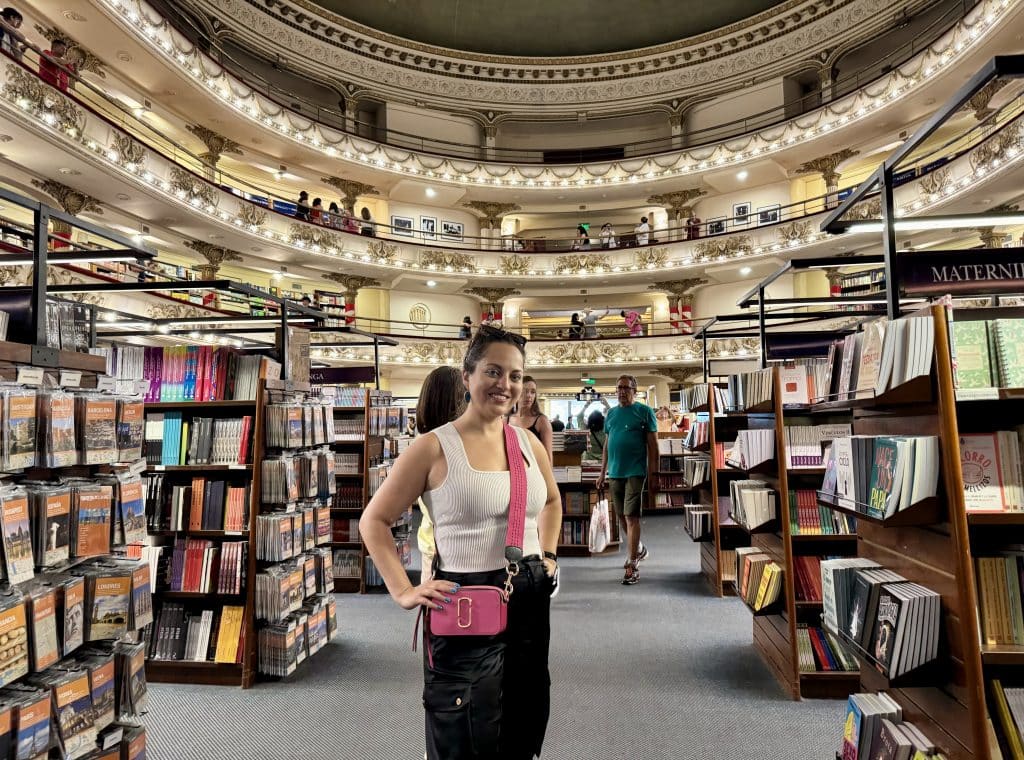
Is Buenos Aires Worth It?
Are you kidding me? Buenos Aires is incredibly worth it! I absolutely love this city, and I was most recently reminded of why I love it so much. The culture, the nightlife, the incredible food, all for surprisingly reasonable prices — it all adds up to a world-class city!
I’m already trying to get myself back to Buenos Aires for a third time. We’ll see how that goes.
As for you — I hope you have the best time in Buenos Aires! There’s nowhere else like it.
More on Argentina:
- 25 Epic Things To Do in El Calafate, Argentina
- 18 Wild Things to Do in El Chaltén, Argentina
- El Calafate vs. El Chaltén: Which Town in Argentine Patagonia Better?
- 16 Epic Things to Do in Ushuaia, Argentina
More on South America:
- 26 Fun Things to Do in San Pedro de Atacama, Chile
- Staying at Ecocamp Patagonia: A Sustainable Resort in Chile
- Solo Female Travel in Colombia: Is it safe?
- What’s it really like to travel to Guyana?
- 17 Best Things to Do in Santiago, Chile
- 15 Best Things to Do in Puerto Varas, Chile
- 11 Cool Day Trips from Santiago, Chile
- 17 Colorful Things to Do in Valparaíso, Chile
Have you been to Buenos Aires? Any suggestions? Share away!